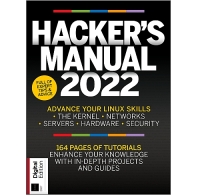Cloudflare has expanded its Zero Trust (opens in new tab) offering into email services, as well as data loss prevention (DLP).
The company added new capabilities to its Zero Trust SASE platform - Cloudflare One it what it promises to be a “deeply integrated” approach that allows for a simple deployment in just a few clicks, fast performance, and robust security across endpoints (opens in new tab), networks and email.
For email (opens in new tab), Cloudflare will look to combine its anti-phishing solution it obtained when it acquired Area 1 Security, with its Browser Isolation feature, quarantining malicious links automatically, in a remote browser session.
Securing email, and data
As for data, Cloudflare says it has now gone beyond “just in-line scanning”. Its Zero Trust platform promises real-time controls, with built-in data loss prevention tools that scan for sensitive information (opens in new tab), or against data at-rest, with an API-driven CASB.
Other features include securing every connection with Zero Trust controls, and connecting and securing data, devices, offices, cloud networks, and more, without relying on hardware boxes, through Cloudflare Magic WAN, which is now generally available.
Since its announcement in 2020, Cloudflare One has been increasing the number of customers by more than double, year-on-year, the company said, while the daily average traffic increased by six times in the same timeframe.
> Zero Trust: what it is and what it is not (opens in new tab)
> Zero Trust: is it as unequivocal as it sounds? (opens in new tab)
> A guide to zero trust: What you need to know when starting at zero (opens in new tab)
"When I sit with customers, they share that one of the most daunting aspects of Zero Trust security is simply where to begin. Making matters worse, every vendor has a different definition for Zero Trust, turning a critical approach to security into a misunderstood and overused term," said Matthew Prince, co-founder and CEO of Cloudflare.
“We believe Zero Trust must extend to the entire network, all the way from email to data centers, and accelerate user and endpoint connections, not slow people down. And we want to give every customer a step-by-step guide for what they can do today, this week, and this month to make themselves more secure regardless of what vendor they use."


